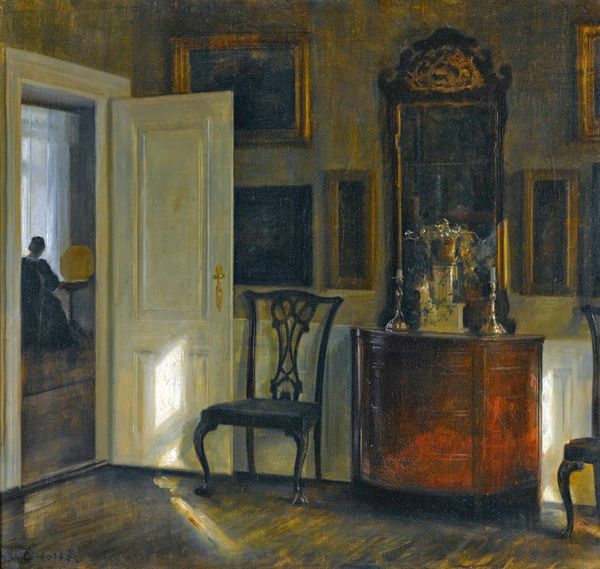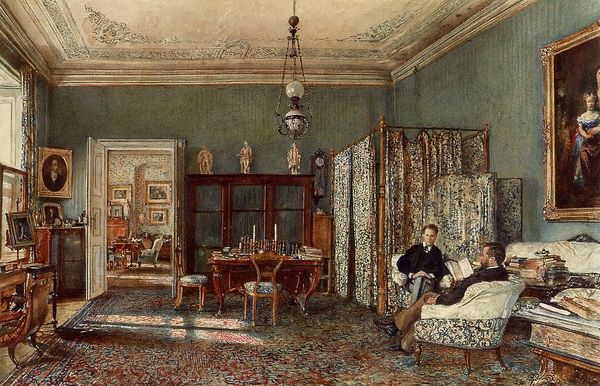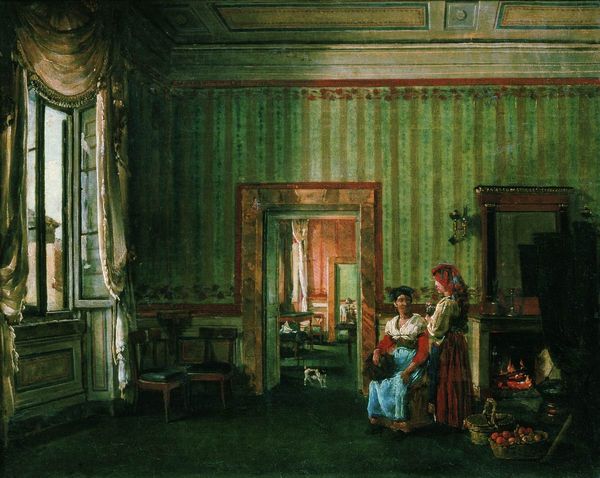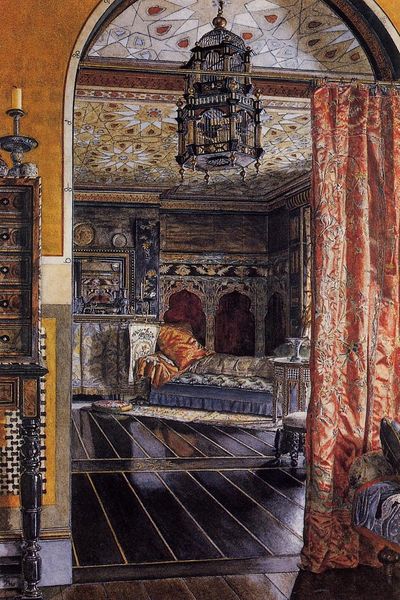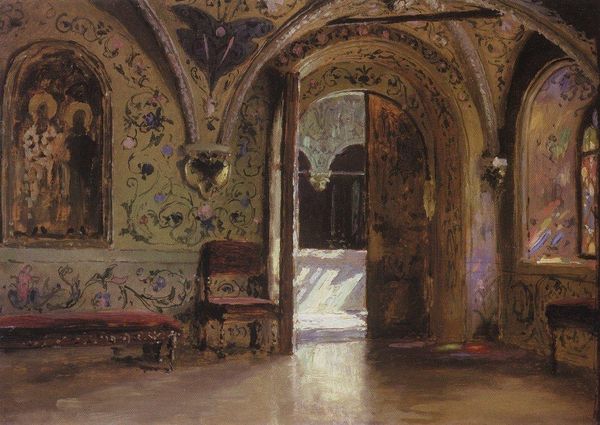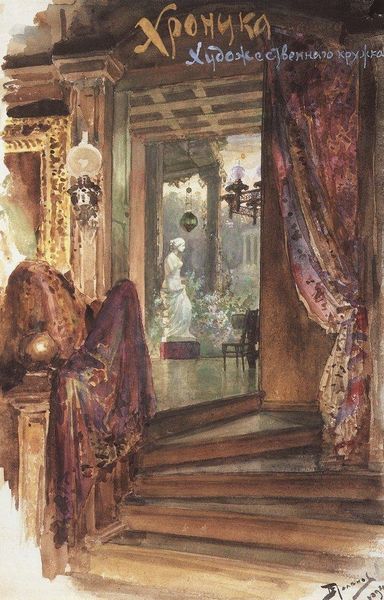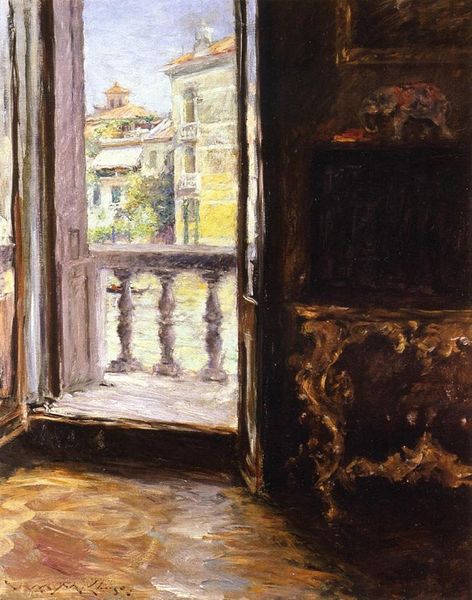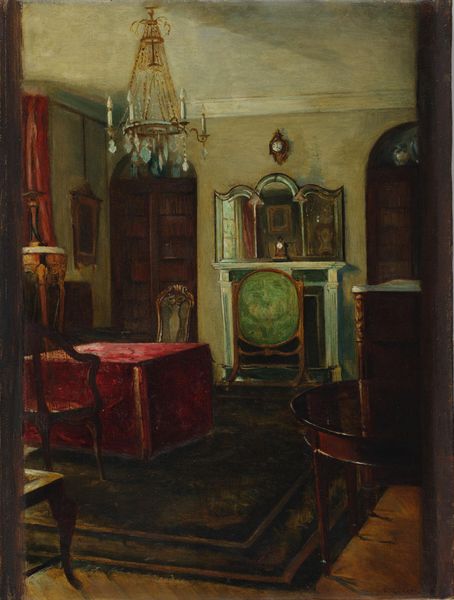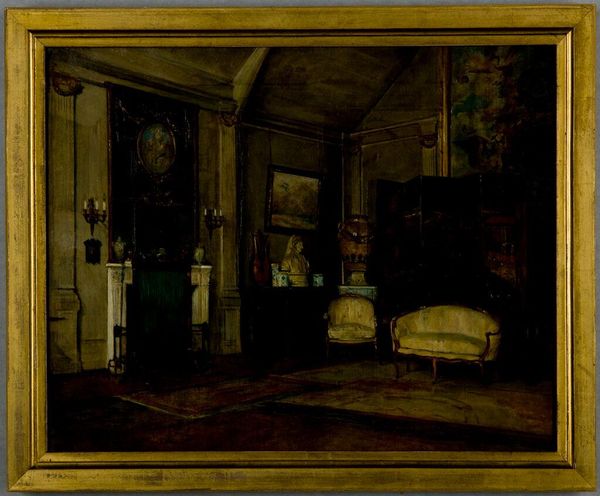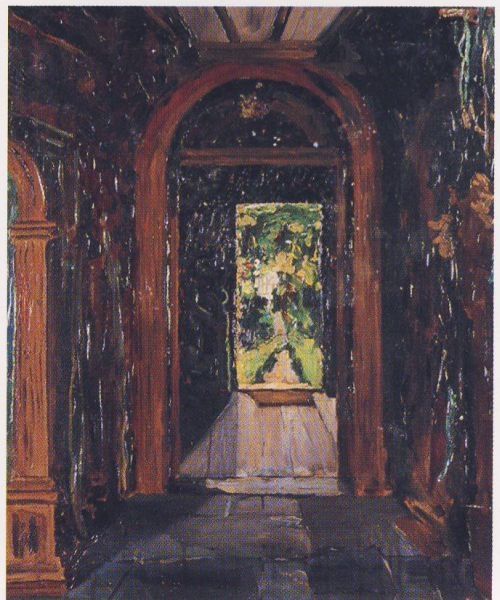
painting, oil-paint
#
portrait
#
painting
#
oil-paint
#
furniture
#
holy-places
#
derelict
#
arch
#
genre-painting
#
realism
Copyright: Public domain
Editor: This is Eastman Johnson's painting, "Not at Home," from 1873, created with oil paint. It strikes me as a really intimate, almost voyeuristic view into a domestic interior. There's a figure on the stairs, but the focus seems to be the room beyond. How do you interpret this work? Curator: It's fascinating to consider the social and historical context of this work. Think about the late 19th century in America. What does the depiction of domestic space signify in a period marked by rapid industrialization and shifting gender roles? The painting could be seen as a commentary on the changing nature of the home and women's place within it. Is she ascending or descending? Editor: I see what you mean about the changing roles! She's heading up the stairs. I'm now seeing that this painting might be alluding to class, gender and domesticity, and a private world perhaps being disrupted. What is the significance of that title "Not at Home?" Curator: Exactly. The title is key, isn't it? Who is "not at home?" The lady on the stairs? Is it a subtle critique of leisure, privilege, or even the absence of certain figures within that domestic sphere due to other oppresive conditions. The "not at home" of enslaved peoples and others historically prevented from having access to safe refuge is a critical subtext. Could this opulent domestic setting, in its stillness, also point to those absences? Editor: So it's not just a picture of a nice room; it’s asking us to think about who has access to this kind of space, and at what cost? Curator: Precisely. Consider how Johnson positions the viewer as an outsider looking in, raising questions about privacy, access, and the hidden stories within these seemingly tranquil scenes. And this all invites questions around whose narratives are made invisible within the art historical record. Editor: That's given me so much to consider. I definitely see the painting differently now! Curator: That’s the power of art – to provoke ongoing questioning and expand our understanding of both the past and present.
Comments
No comments
Be the first to comment and join the conversation on the ultimate creative platform.
